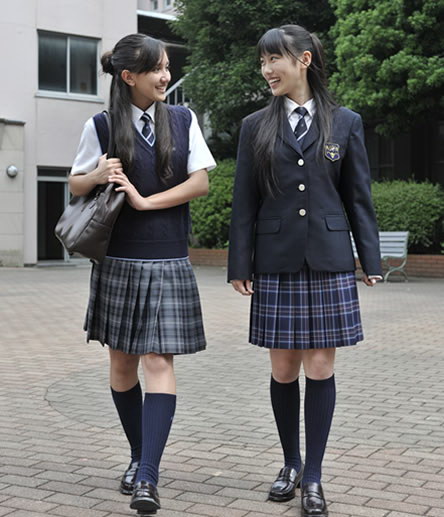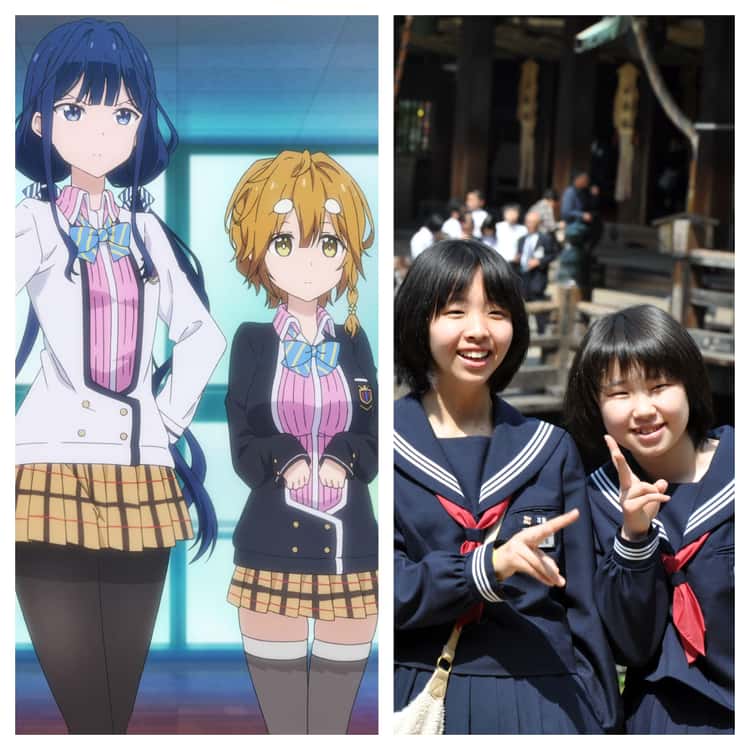The smart Trick of Japanese Uniforms That Nobody is Discussing
Wiki Article
Getting My Japanese Uniforms To Work
Table of ContentsJapanese Uniforms Things To Know Before You Get This10 Simple Techniques For Japanese UniformsIndicators on Japanese Uniforms You Should KnowJapanese Uniforms - An OverviewThe 9-Second Trick For Japanese Uniforms
Throughout the end of the Meiji period and throughout the Taisho period, western design school uniforms were introduced due to the fact that they were extra functional and functional than the traditional garments. It was mostly the male trainees that remained in attire at the beginning. Relying on the institution, ladies at the time either wore a suit top with skirt, robe or seafarer uniform.Sailor attire was introduced in Taisho 9 (1920's). Japanese uniforms. Find out more regarding the Taisho period at.
Business owners and females use dark fits and also white t shirts while sales staffs in division stores wear the store's attire. Whether they are operating in building, road job, package shipment, or the blog post office, a lot of employees put on a certain attire. By wearing uniforms to match their jobs, workers really feel satisfaction in what they do as well as are full of motivation and also energy.
Uniforms additionally offer the consumer a feeling of security as well as self-confidence in the service or product. In addition to wearing mandatory uniforms, Japanese people additionally such as to put on standard clothes which in itself can be identified an attire. They do this either to suit or to offer themselves the greatest possibility at success.
Japanese Uniforms Things To Know Before You Get This
 Without reasoning of a choice, young Japanese will head to these shops in order to have the utmost possibility of being used a task. In Japan, you will frequently see pals, fans or households all dressing alike.
Without reasoning of a choice, young Japanese will head to these shops in order to have the utmost possibility of being used a task. In Japan, you will frequently see pals, fans or households all dressing alike.A winter months seafarer fuku (sailor attire) with long sleeves on a mannequin. The Japanese institution attire is designed in appearance comparable to that of the European-style marine attires and was initially utilized in Japan in the late 19th century, replacing the conventional kimono. Today, institution attires are common in a lot of the Japanese public and independent school systems.
The initial model of the present days Gakuran was first established in 1886 for the trainees of Tokyo University.

The sailor attire today is usually connected exclusively with junior high, because a bulk of high schools have actually transformed to more Western-style plaid skirts or blazers - Japanese uniforms. The clothes is gender-specific as well as the two alternatives, male or women, are dispensed to pupils according to the sex they were appointed at birth.
The Only Guide to Japanese Uniforms
Japanese institution attire is recognized for its trendy look. Many schools in Japan have their uniforms, and also the style varies depending upon the school. Japanese uniforms. For Japanese trainees, institution uniform is not only for revealing which college an individual comes from. It has actually turned into one of the fashion products as a result of the change of institution consistent styles as well as style trends. Now, you will certainly see exactly how Japanese institution uniform has been developed and altered over time, and also exactly how Japanese students enjoy their attires as style. The first college uniform called seafarer fuku was influenced by the European naval uniforms.
Now, you will certainly see exactly how Japanese institution uniform has been developed and altered over time, and also exactly how Japanese students enjoy their attires as style. The first college uniform called seafarer fuku was influenced by the European naval uniforms.Fashionable school attires lead to the increase the number of candidates to the college. After 1990s, institution attires came to be recognized not simply as "consistent", however as "style".
The "fashionalization" of Japanese institution attire captured eyes from all around the world, and there are lots of on the internet shops check it out where you can acquire Japanese style institution attires. Each institution has its uniform, generally its institution sign on.
The Only Guide for Japanese Uniforms
The size of sleeves as well as material are changed according to the season. Sailor attire is Full Report a preliminary design of Japanese college uniform for female pupils, motivated by the naval uniform. It includes a blouse with a sailor-like collar and pleated skirt. Accessories such as ribbon, necktie, or bow are connected about the collar.Few colleges have the bolero attire today. Eton coat is a jacket without a collar, and also is frequently introduced to primary college or junior high school.
Jumper skirt used to be the main stream of school uniform in the summer season, but it is changed with the various other style when the institution alters the attire. In wintertime, jumper skirt is put on under the blazer or the bolero. Supporter skirt school attire is normally used in primary school, often in kindergarten.
It is put on with a shirt in the wintertime. Today school attire is used not only to show which school an individual goes to, but to make use of as fashion things as a way of revealing the person's individuality. Some schools need trainees to acquire only blazers as well as institution pins marked by the institution so that trainees can select the various other items over at this website such as socks, shoes, ribbons, bags, and so on.
Unknown Facts About Japanese Uniforms
Occasionally they do not wear their institution attires, but use attires that they got in various stores. It is called "Nanchatte seifuku." Apparel brand names such as East boy as well as Conomi supply a wide array of optional things for school attires. The followings are the list of items which trainees can generally choose on their own.Report this wiki page